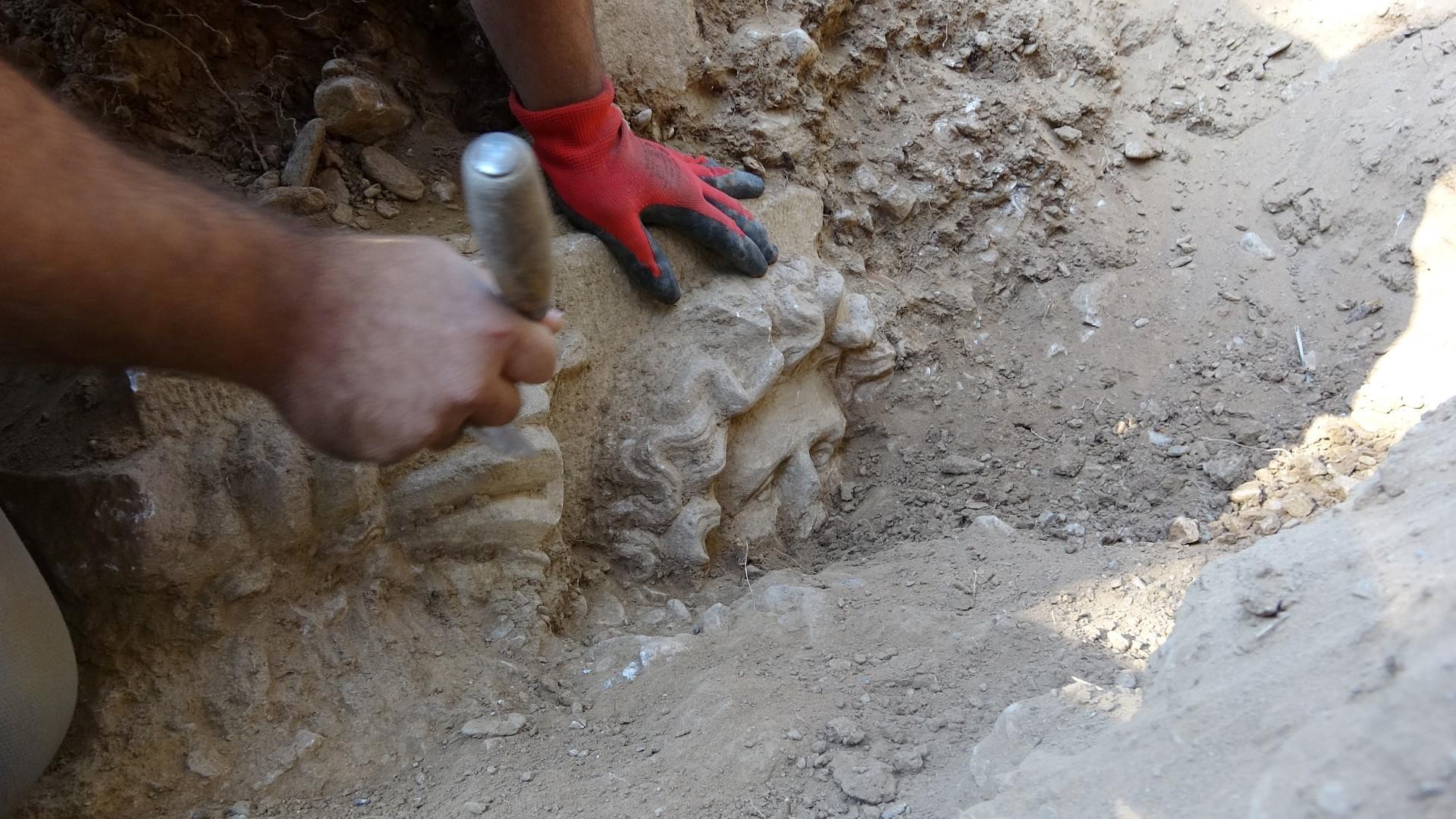
A 2,500-year-old sarcophagus has been found in the olive grove illegally dug by treasure hunters in the western province of Aydın’s Karacasu district. While it was seen that there was a Medusa relief on the sarcophagus, the gendarmerie took extensive security measures against the treasure hunters in the area.
The gendarmerie teams, after receiving the notice that an illegal excavation was carried out in an area near the ancient city of Aphrodisias, which is on the UNESCO World Heritage list in Karacasu, started an operation. The teams examined the region with a drone with motion-sensitive thermal cameras. After weeks of pursuit, a group wandering around the area was detected.
While patrolling the area, the gendarmerie teams also noticed an excavation area in one of the olive groves. A sarcophagus was found outside in the excavation area. The area was taken under protection after the authorities were informed.
Further works in the area, where treasure hunters excavated, revealed two sarcophagi graves. The Medussa relief on the sarcophagi, estimated to belong to the Roman period about 2,500 years ago, attracts attention.

“For a long time, groups from Bursa, Istanbul, Muğla and Ankara were coming to Karacasu and displaying images in the region. The gendarmerie started following them. Information was received that excavations would be carried in this area. As a result of the gendarme’s work, the places to be excavated were found and two sarcophagi, along with an altar, were discovered in the area.” said the district’s governor, Ahmet Soley.
“The region remains in the metropolitan area of Aphrodisias. There may be many more of these sarcophagi in this region. The perpetrators of the illegal diggings are still unclear,” Soley added.
The Provincial Culture and Tourism Director Umut Tuncer said that there is Medusa relief among others that they have not yet been identified on one of the sarcophagi.
“Therefore, we think that the person in this sarcophagus was one of the top executives of the region. This made us excited because the basic material that feeds museum tourism is produced in the metropolitan area. We believe that the discovery of a new metropolitan area creates great potential in terms of regional tourism. As you know, the Aphrodisias region is belonging to the Hellenistic period, and although these sarcophagi have not yet fully identified, we estimate that they are at least 2,500 years old.”